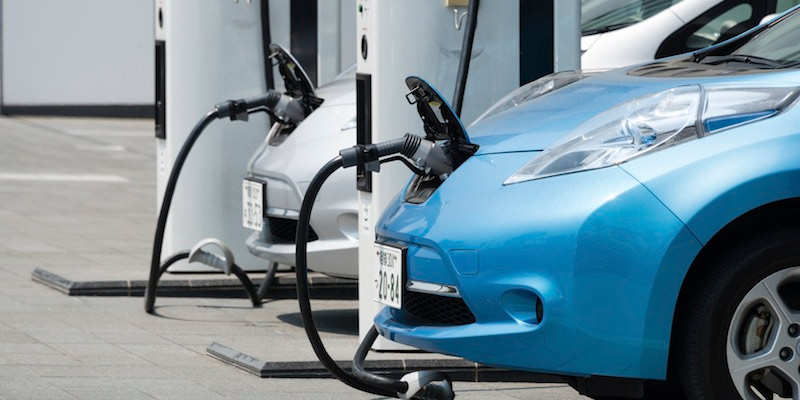 Electric cars being charged.
Electric cars being charged. Researchers achieve extremely fast charging speeds for commercial lithium-ion batteries
For consumers considering an electric vehicle (EV), long charge times, some up to 12 hours, can be a deal-breaker. But researchers may have discovered a way to reduce the charging time of the lithium-ion batteries used in EVs to less than 15 minutes.
Led by Ravi Prasher, adjunct professor of mechanical engineering at UC Berkeley and senior scientist at Berkeley Lab, the researchers achieved extreme fast charging (XFC) of these batteries using active thermal switching, an approach that regulates the battery’s self-generated heat to control battery temperature during charge and discharge.
As reported in Nature Communications, this thermally modulated charging protocol, or TMCP, allows for very fast charging while mitigating both the large-current-induced and temperature-induced reactions within the battery’s cell that can degrade its lifespan and performance over time.
“Our method involves insulating the battery and using its own heat so that it does not cool during fast charge and trigger these harmful reactions,” said Buyi Zhang, a Ph.D. student in Prasher’s lab and the study’s co-lead author, along with Berkeley Lab’s Yuqiang Zeng. “As a result, we can achieve XFC while still maximizing the battery’s cycle life.”
According to the study, even EVs with fast-charging capabilities require more than 30 minutes at a charging station to achieve 80% charge capacity. The Department of Energy (DOE) set a goal of less than 15 minutes to achieve this same state of charge and less than 20% capacity loss after 500 cycles, but researchers had to find a way to keep charge time to a minimum while ensuring the battery would remain operational and have a long cycle life.
Until now, it was accepted among researchers that a long XFC cycle life could not be achieved in existing commercial high-energy-density, lithium-ion batteries because the act of charging triggers lithium plating, a harmful reaction inside the battery. Eliminating or mitigating lithium plating “is one of the greatest research and development (R&D) challenges remaining to enable XFC,” according to the study’s authors.
Prior research had shown that controlling the battery’s temperature could hold the answer, but these heating strategies had focused on keeping the temperature steady and often were more complex, requiring additional materials to make them work.
This study showed that modulating the heat transfer between the battery and the environment during charge and discharge is a simple and effective way to improve XFC performance. By insulating the battery, which resulted in higher temperature during charge and allowed it to cool during discharge, the researchers found that the capacity retention, charge times and cycle life exceeded the goals set by the DOE.
Looking ahead, Zhang is optimistic that this thermal protocol will bring us one step closer to enabling widespread EV adoption. “If we’re talking about fast charge and the larger adoption of EVs, I think that could be accomplished in around five years,” he said.
